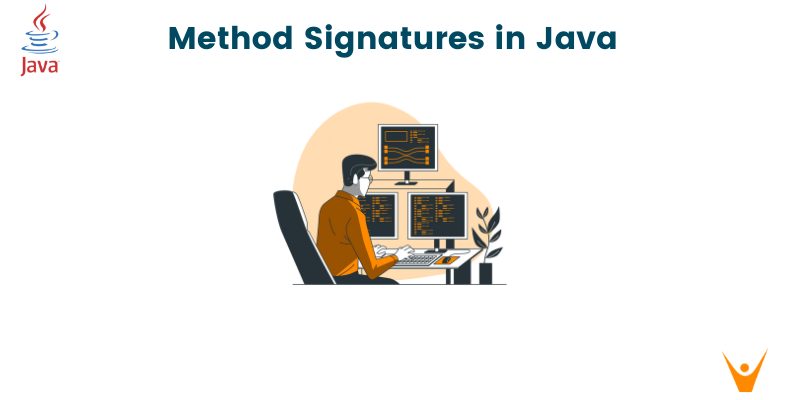Method signatures in Java serve as the unique fingerprints of functions within a class, defining their identity through a blend of names, return types, and parameter lists. Understanding these signatures is pivotal, not just for method invocation but for leveraging Java's versatility, enabling method overloading, and crafting maintainable, scalable code. This article navigates through the intricate details of method signatures, from their fundamental components to best practices and real-world applications, empowering developers to wield this essential Java feature with precision and clarity.
What is a Method Signature?
A method signature in Java is a unique combination of a method's name and it's parameter list. It excludes the method's return type and any modifiers. This unique combination allows Java to differentiate between methods within a class based on their names and the types and order of their parameters.
Consider two methods within the same class:
public void greetUser(String name) { /* Method implementation */ } public int greetUser(int age, String name) { /* Method implementation */ }
Although these methods share the same name, greetUser, their method signatures differ beceuse of their parameter lists. The first method's signature is greetUser(String name), while the second one's signature is greetUser(int age, String name).
Components of a Method Signature
The following are the components of a Method Signature:
Method Name
The method name in Java serves as the identifier or label for the block of code encapsulated within the method. It should be chosen carefully to convey the action or purpose of the method, adhering to naming conventions for clarity and readability.
For instance, consider a method that calculates the average of an array of integers:
public double calculateAverage(int[] numbers) { /* Method implementation */ }
Here, calculateAverage is the method name. According to Java naming conventions, it uses camelCase for readability and starts with a lowercase letter.
Return Type
The return type specifies the data type of the value that the method will return upon completion of its execution. In Java, methods can return values of primitive data types (such as int, double, boolean, etc.) or reference types (objects).
For example, a method that calculates the area of a circle and returns a double value:
public double calculateCircleArea(double radius) { /* Method implementation */ }
In this case, double is the return type indicating that the method will return a decimal value of type double.
Parameter List
Parameters are values passed to the method for it to work with. The parameter list specifies the data types and names of these values. Methods can have zero or more parameters, and they are enclosed within parentheses.
Consider a method that checks if a given number is prime:
public boolean isPrime(int number) { /* Method implementation */ }
Here, (int number) represents the parameter list. It specifies a single parameter of type int named number that the method expects.
Method Overloading and Signatures
Method overloading allows multiple methods within the same class to share the same name but differ in their method signatures. Overloaded methods have different parameter lists or types, enabling developers to create methods that perform similar tasks but with different inputs.
For instance, consider these overloaded methods:
public int add(int a, int b) { /* Method implementation */ } public double add(double a, double b) { /* Method implementation */ }
These methods have the same name add, but their method signatures differ based on the parameter types (int and double). This technique improves code readability and provides flexibility in method usage.
Examples of Method Signatures
Let's examine a few examples to solidify our understanding of method signatures:
// Method signature: printMessage(String message) public void printMessage(String message) { /* Method implementation */ } // Method signature: calculate(int x, int y) public int calculate(int x, int y) { /* Method implementation */ } // Method signature: findMax(double[] numbers) public double findMax(double[] numbers) { /* Method implementation */ }
Each method has a unique signature based on its name and the types and order of its parameters. This uniqueness enables the Java compiler to distinguish between methods, facilitating method overloading and ensuring correct method invocations during runtime.
Method Signature Rules and Conventions
Method Overloading and Signatures
Method overloading allows multiple methods within a class to share the same name but with different parameter lists. To overload a method successfully, Java enforces specific rules
- Method Name: Method names must be the seme for overloading.
- Parameter List: The parameter lists of overloaded methods must differ either in the number of parameters or in the data types and/or order of parameters.
Return types or access modifiers don’t contribute to creating unique method signatures for overloading.
Consider this example:
public int calculate(int a, int b) { /* Method implementation */ } public int calculate(int a, int b, int c) { /* Method implementation */ }
Here, both methods have the same name calculate but differ in their parameter lists (calculate(int a, int b) vs. calculate(int a, int b, int c)), meeting the overloading criteria.
Access Modifiers and Method Signatures
Access modifiers (such as public, private, protected, or default) impact method accessibility within and outside classes. However, they don't contribute to method signatures. Method signatures remain unique based on the method name and parameter list, regardless of the access modifiers used.
public void doSomething() { /* Method implementation */ } private void doSomething() { /* Method implementation */ }
The code above violates the method overloading rule as it attempts to create two methods with the same name and parameter list, differing only in their access modifiers. This will result in a compilation error.
Final and Static Methods in Relation to Signatures
The final modifier prevents a method from being overridden in subclasses. When a method is marked as final, it doesn't affect the method's signature, which is still determined by its name and parameter list.
Similarly, static methods belong to the class rather than instances of the class. Static methods are part of the class interface but don't alter the method signature. Overloading static methods is possible by varying the parameter lists, just like with non-static methods.
Conclusion
To sum up, Method signatures in Java form the backbone of method identification and differentiation within classes. They consist of the method name, return type, and parameter list, serving as unique identifiers for methods. Understanding method signatures is crucial for effective method design, overloading, and code maintainability.








